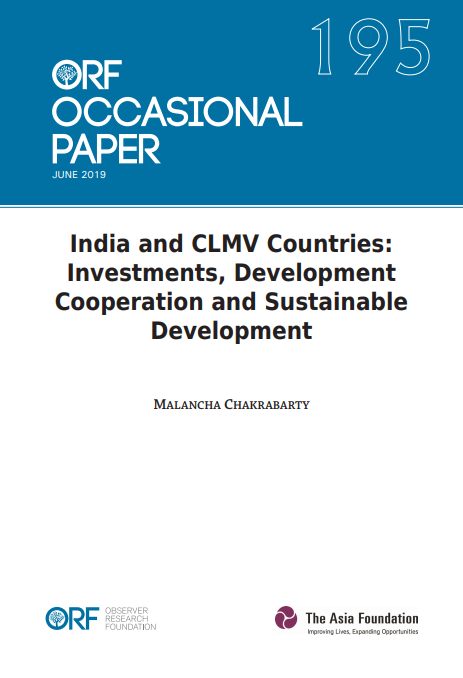India and CLMV Countries: Investments, Development Cooperation and Sustainable Development
India shares close political and strategic ties with the Southeast Asian subregion of Cambodia, Laos, Myanmar and Vietnam (or the CLMV countries). However, their economic ties remain weak, owing to various factors including lack of physical connectivity, as well as the absence of synergy between India’s Lines of Credit to CLMV and the country’s economic outreach. This paper analyses India’s investments and development cooperation initiatives in the subregion. Using the case of Vietnam, the paper outlines the current status of India-CLMV economic relations, highlights the weaknesses, and points to the way forward. It recommends the drafting of a white paper on India’s economic diplomacy to clearly spell out the country’s long-term strategy and goals in the subregion. The paper also calls for an integrated approach towards the CLMV subregion in terms of trade, investment, and development cooperation.
This paper presents an overview of India’s economic engagements with the CLMV countries with a special emphasis on Indian investments and development cooperation initiatives in the subregion. It offers specific recommendations to invigorate Indian overseas investments, improve the effectiveness of India’s development cooperation, and promote sustainable development in the subregion. Vietnam is used as a case study for this paper given its standing as a primary recipient of India’s overseas investments in the subregion; it is also the largest economy amongst the CLMV. The two main sources of data for this study are the Reserve Bank of India’s (RBI) database on overseas foreign direct investmentsii and the EXIM Bank Database on Indian lines of credit. However, it is important to note that many Indian companies channel their investments through their subsidiaries in other countries (such as Singapore or Thailand), and such investments are not captured by the RBI’s database. To fill this gap, the study relies on a number of technical reports by industry associations, as well as other secondary sources like academic papers, news articles, company annual reports, and websites of the Indian embassies in the CLMV countries. The paper also relies on information collected through semi-structured interviews of experts and officials in New Delhi and in Vietnam.

More Detail
OBSERVER RESEARCH FOUNDATION